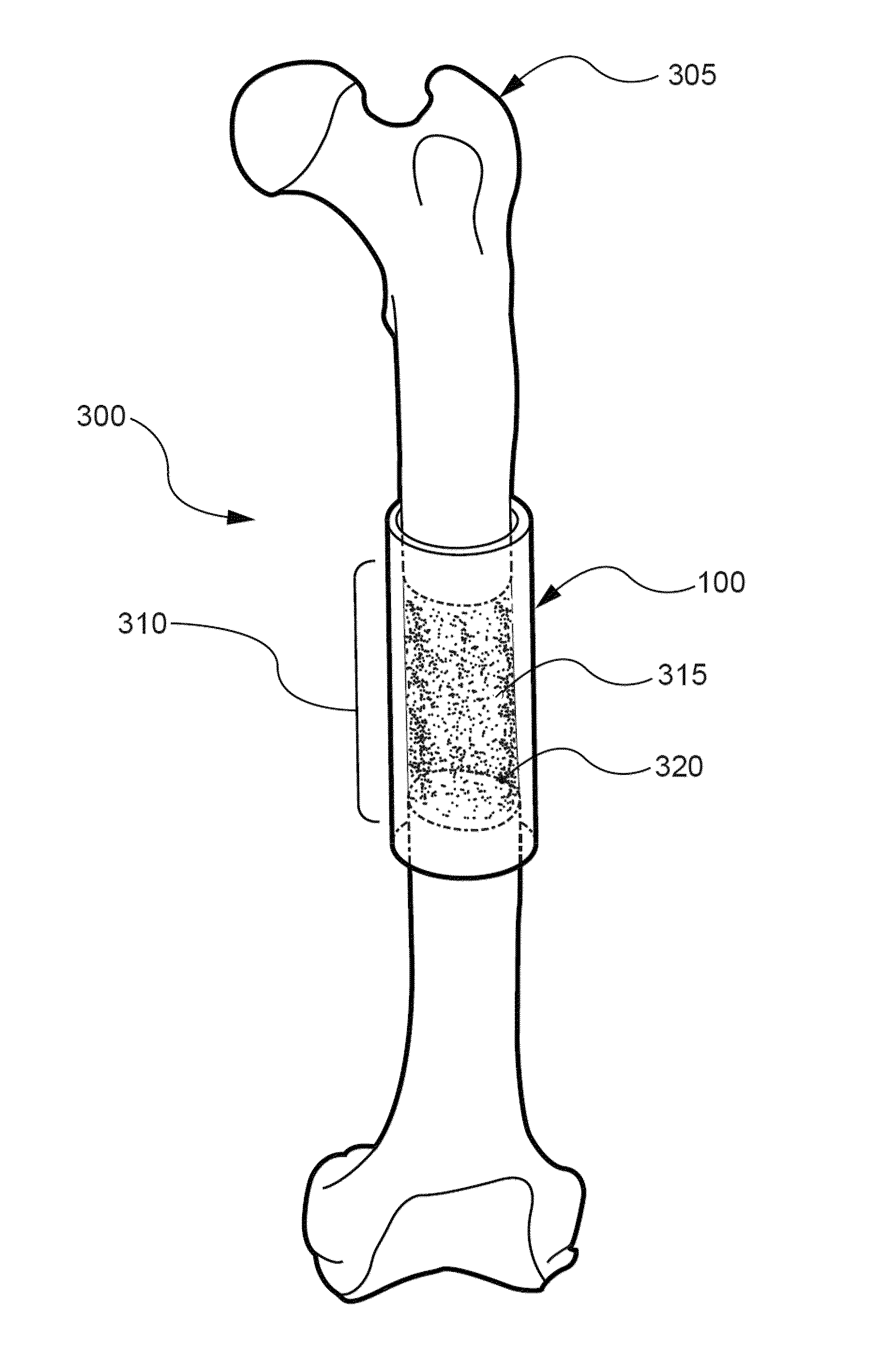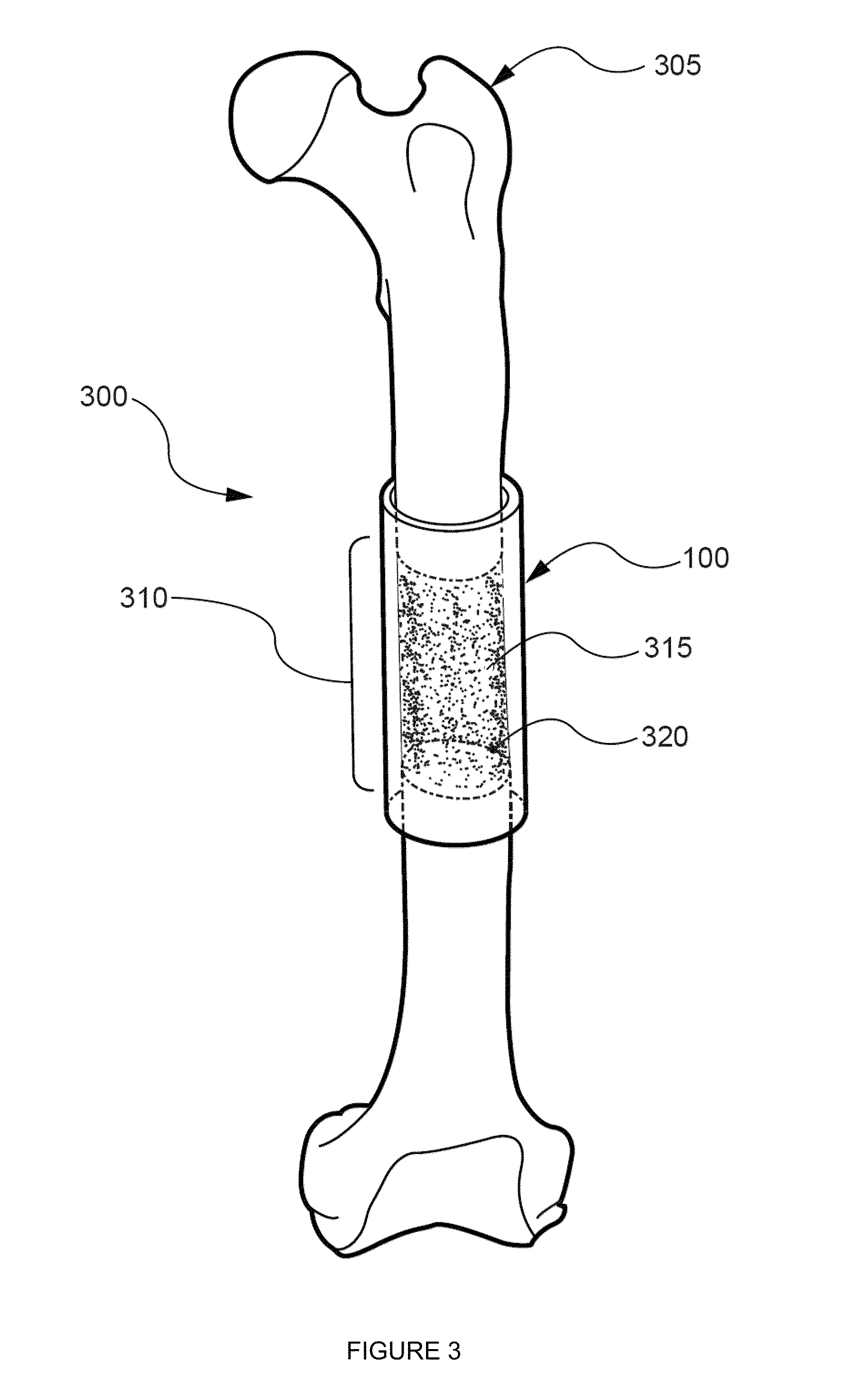Systems and methods to affect anatomical structures
a technology of anatomical structure and system, applied in the field of systems and methods to affect anatomical structure, can solve the problems of limited mobility, significant impact on the quality of life of affected individuals, and certain fractures and bone defects, and require additional bone augmentation
- Summary
- Abstract
- Description
- Claims
- Application Information
AI Technical Summary
Benefits of technology
Problems solved by technology
Method used
Image
Examples
example 1
Colonization and Osteogenic Differentiation of Different Stem Cell Sources on Electrospun Nanofiber Meshes
[0094]The purpose of this Example was to investigate the attachment, colonization and osteogenic differentiation of human MSCs (hMSCs) and human AFS (hAFS) cells on electrospun nanofiber meshes. This Example demonstrates that electrospun meshes are able to robustly support these functions for both cell types. Compared to tissue culture plastic, there is delayed initial attachment and proliferation, but enhanced mineralization at a later time point. Differences in the kinetics of osteogenic differentiation were observed between hMSCs and hAFS cells. Cell-seeded nanofiber meshes were also effective in colonizing three dimensional scaffolds in an in vitro model. These results provide support for the use of the nanofiber mesh as a cell delivery vehicle for the repair of bone defects in vivo.
[0095]Materials and Methods
[0096]Fabrication of nanofiber meshes. A polymer solution was made...
example 2
Nanofiber Orientation and Surface Functionalization Modulate Human MSC Infiltration and Osteogenic Differentiation
[0120]Electrospun nanofiber meshes are a unique type of scaffold with structural features that, at least by scale, resemble the extracellular matrix (ECM). In addition, they exhibit large surface area and high porosity, making them suitable as a scaffold for guiding tissue regeneration by host cells. For example, in the case of a large diaphyseal bone defect, the nanofiber mesh may be able to provide cues for progenitor cells from the periosteum and marrow space to migrate into the defect region and deposit mineralized matrix. Example 1 demonstrated that nanofiber meshes made from a synthetic polymer are able to support the attachment, colonization and osteogenic differentiation of progenitor cells. Synthetic polymers, however, lack biological ligands, and are not capable of directing intracellular signaling and response. Nanofiber meshes have also been fabricated from n...
example 3
A Novel Hybrid System for Growth Factor Delivery Promotes Functional Repair of Large Bone Defects
[0149]The primary objective of this Example was to develop and test a hybrid growth factor delivery system for bone repair that utilizes an electrospun nanofiber mesh and injectable alginate hydrogel. To test this system, we evaluated its ability to deliver rhBMP-2 for the repair of critically-sized segmental bone defects in vivo. For control group comparisons, we also examined the ability of the nanofiber mesh alone, and in combination with alginate hydrogel, to heal the bone defects without rhBMP-2. Finally, the effect of a perforated nanofiber mesh design on bone repair was investigated.
[0150]Materials and Methods
[0151]Fabrication of nanofiber mesh tubes. Poly (ε-caprolactone) (PCL) pellets (Sigma-Aldrich, St. Louis, Mo.) were dissolved in a 90:10 volume ratio of hexafluoro-2-propanol (HFP):dimethylformamide (DMF) (Sigma-Aldrich) to obtain a 12% (w / v) polymer solution. DMF was first s...
PUM
| Property | Measurement | Unit |
|---|---|---|
| pore size | aaaaa | aaaaa |
| diameters | aaaaa | aaaaa |
| thickness | aaaaa | aaaaa |
Abstract
Description
Claims
Application Information
 Login to View More
Login to View More - R&D
- Intellectual Property
- Life Sciences
- Materials
- Tech Scout
- Unparalleled Data Quality
- Higher Quality Content
- 60% Fewer Hallucinations
Browse by: Latest US Patents, China's latest patents, Technical Efficacy Thesaurus, Application Domain, Technology Topic, Popular Technical Reports.
© 2025 PatSnap. All rights reserved.Legal|Privacy policy|Modern Slavery Act Transparency Statement|Sitemap|About US| Contact US: help@patsnap.com



